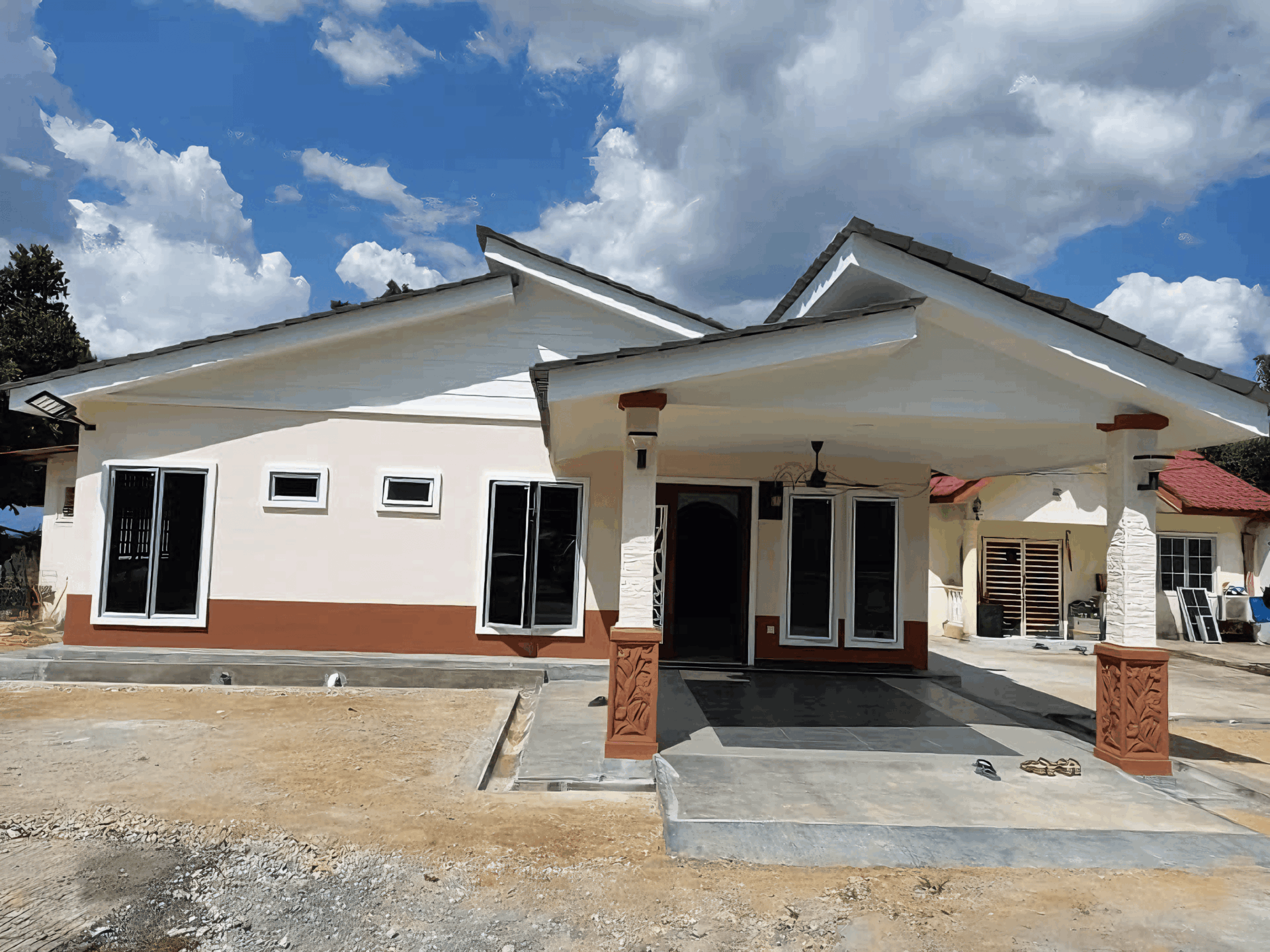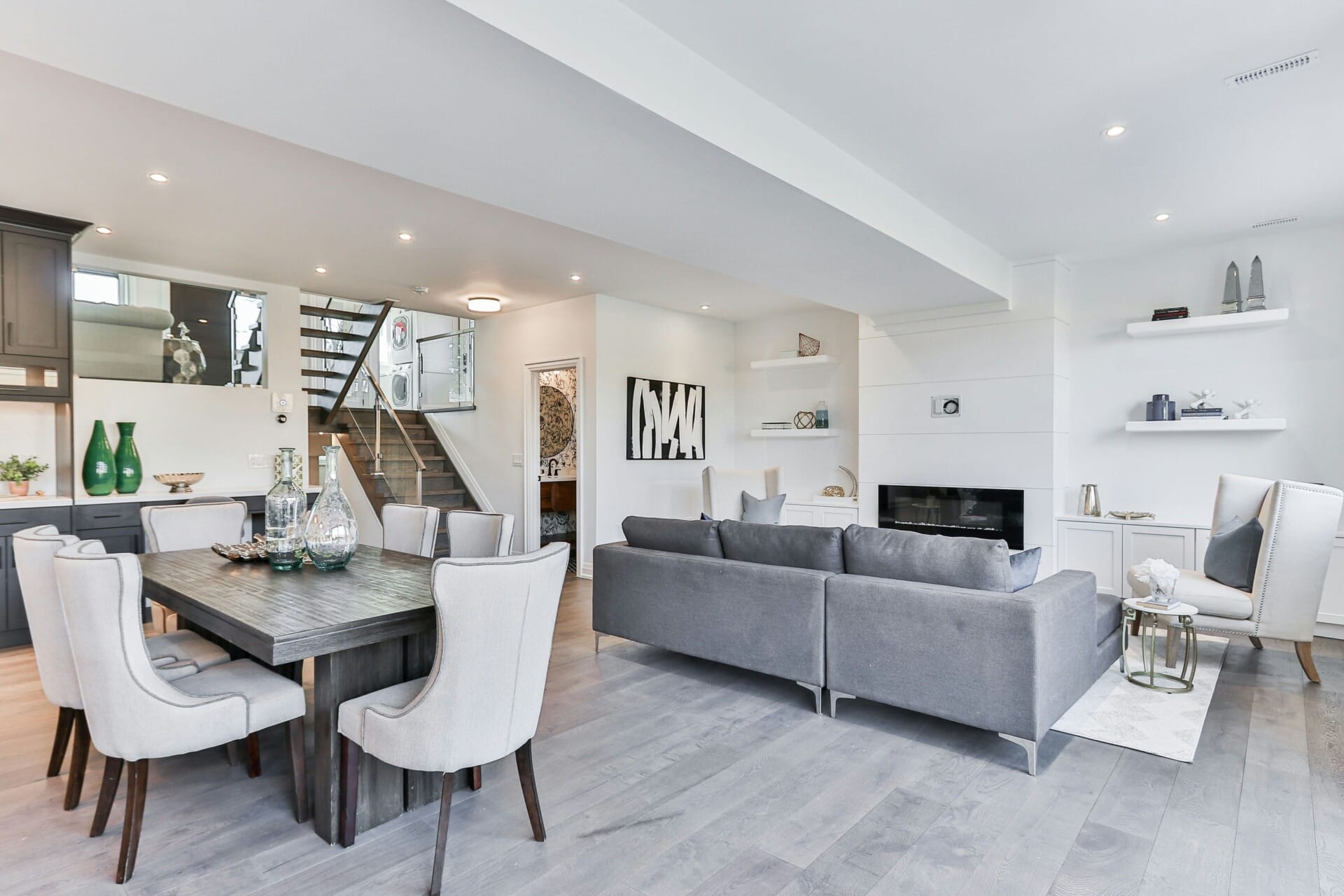Imagine waking up every morning knowing that your energy bills are practically non-existent. Sounds like a dream, right? Well, for many Malaysians, this dream is becoming a reality thanks to net-zero energy homes. These innovative abodes are designed to produce as much energy as they consume, meaning homeowners are not just cutting down on their monthly utility bills—they’re sometimes slashing them to zero! In this article, we’ll dive into how net-zero energy homes are not just a trend but a smart financial move for Malaysians looking to save big while also contributing to a greener planet. So, pull up a chair and let’s explore how these eco-friendly homes are changing the game, one ringgit at a time! 💸🔌
Understanding Net-Zero Energy Homes and Their Benefits
Net-Zero Energy Homes (NZEH) are revolutionizing the way Malaysians approach energy consumption. Essentially, these homes produce as much energy as they use over the course of a year, thanks to a combination of energy-efficient practices and renewable energy sources, like solar power. This means homeowners can slash their electricity bills while also reducing their carbon footprint. Imagine that blissful feeling of opening your utility bill and seeing a zero balance during peak usage months!
So, what makes these homes so special? Here are a few key features that contribute to their net-zero status:
- High-Performance Insulation: Keeps your home cool in the hot Malaysian climate, minimizing the need for air conditioning.
- Energy-Efficient Appliances: From refrigerators to washing machines, utilizing appliances that consume less energy can make a significant difference.
- Solar Panels: Harnessing the abundant sun ensures that you generate your own electricity, saving serious bucks!
- Smart Home Technologies: Automation for lighting, heating, and cooling can optimize energy use in real-time.
Let’s break down the potential savings:
| Expense Type | Traditional Home (MYR) | Net-Zero Home (MYR) |
|---|---|---|
| Monthly Utility Bill | 300 | 0 |
| Annual Energy Cost | 3,600 | 0 |
| Maintenance Cost (Solar) | 0 | 500 |
With these energy-efficient practices and technologies in place, Malaysians can expect not just a smaller carbon footprint, but considerable savings in their energy expenses. Building or renovating your home to become net-zero is an investment that keeps on giving—savings now, and a sustainable living space for future generations!

Exploring the Technology Behind Energy Efficiency
When it comes to energy efficiency in homes, technology is playing a transformative role. Imagine using smart gadgets that not only make your life easier but also help you save a ton on those monthly bills! Smart thermostats, for example, learn your habits and adjust temperatures automatically, ensuring you’re not heating or cooling an empty room. These gadgets can significantly reduce energy consumption, promoting a more sustainable lifestyle. Other tech innovations like energy-efficient appliances and real-time energy monitoring systems empower homeowners to be proactive in managing their usage.
Additionally, solar panel systems have become increasingly popular in net-zero energy homes across Malaysia. By harnessing the sun’s power, homeowners can generate their own electricity, slashing reliance on conventional energy sources. But the savings don’t stop there! With advancements in battery storage technology, excess energy generated during the day can be stored for use at night, further maximizing efficiency. It’s a game-changer, allowing Malaysians to break free from fluctuating utility rates and enjoy predictable expenses.
Let’s not forget about home insulation and building materials that contribute to energy efficiency. Modern net-zero homes are designed with materials that enhance insulation, significantly reducing the need for heating and cooling. Here’s a quick comparison that shows how much energy-efficient designs can save on utility bills:
| Home Type | Monthly Utility Savings | Annual Utility Savings |
|---|---|---|
| Traditional Home | RM 300 | RM 3,600 |
| Energy-Efficient Home | RM 150 | RM 1,800 |
| Net-Zero Energy Home | RM 50 | RM 600 |
This comparison highlights just how powerful these energy-efficient technologies can be in transforming not just homes, but whole communities. By investing in such advancements, Malaysians are not only saving money but also contributing to a cleaner environment. It’s a win-win situation!

The Financial Impact of Lower Utility Bills
Imagine checking your monthly utility bills and feeling that familiar rush of happiness as you see them plummet. In Malaysia, homeowners are beginning to experience this as net-zero energy homes come into play. These energy-efficient homes produce as much energy as they consume, essentially allowing homeowners to eliminate or drastically reduce their electricity expenses. As a direct result, many Malaysians are enjoying significant savings each month, which can be redirected towards other essential needs or even fun family activities.
How do these homes achieve such remarkable savings? Through a combination of advanced technologies and sustainable practices, net-zero energy homes maximize energy efficiency. Here are some key contributors to lower utility costs:
- Solar Panels: Harnessing the sun’s energy to generate electricity, these systems effectively offset grid consumption.
- Energy-Efficient Appliances: With cooler refrigerators and washing machines that use less water, monthly bills take a dive.
- High-Performance Insulation: Keeping homes cooler in the Malaysian heat reduces reliance on air conditioning.
To paint a clearer picture, here’s a simple comparison of typical monthly utility costs for standard homes versus net-zero energy homes:
| Home Type | Average Monthly Cost (RM) |
|---|---|
| Standard Home | 300 |
| Net-Zero Energy Home | 50 |
The numbers speak for themselves! By adopting net-zero energy solutions, not only do homeowners save on utility bills, but they also invest in a more sustainable future for Malaysia. It’s a win-win situation that offers long-term financial benefits while contributing to environmental well-being. So why not jump on this trend and start saving big bucks?

Government Incentives for Adopting Net-Zero Energy Homes
Understanding the financial advantages of switching to net-zero energy homes isn’t just about reducing monthly bills; it’s also about taking advantage of government programs that can significantly offset initial costs. Various incentives are available in Malaysia, aiming to encourage homeowners to embrace sustainable living. These programs demonstrate the government’s commitment to sustainability while providing real monetary benefits to homeowners.
Some of the key incentives include:
- Tax Rebates: Homeowners can benefit from tax reductions, making it more affordable to invest in energy-efficient products.
- Subsidies for Renewable Energy Installations: The government often offers financial aid for solar panel installations, reducing upfront expenses.
- Low-Interest Loans: Special financing options can ease the financial burden, helping homeowners pay for upgrades over time.
In addition to these incentives, there are specific programs aimed at promoting eco-friendly housing projects, like:
| Program Name | Description | Benefit |
|---|---|---|
| Green Technology Financing Scheme | Encourages the implementation of green technologies | Up to 70% financing for eligible projects |
| Renewable Energy Act | Encourages solar energy use among households | Feed-in tariffs to sell excess energy |
These initiatives not only make it easier for Malaysians to switch to net-zero energy homes but also contribute significantly to reducing overall energy consumption. Homeowners who take advantage of these programs can often see their investments pay off faster, enhancing both their financial and environmental well-being.

Sustainable Materials and Their Cost Savings
When it comes to energy-efficient living, sustainable materials are leading the charge, not just for the environment but also for your wallet! Homeowners in Malaysia are discovering that building with sustainable materials, such as bamboo, recycled steel, and low-VOC (volatile organic compound) paints, can drastically reduce long-term expenses. These materials aren’t just eco-friendly; they offer impressive durability and require less maintenance, saving you time and money down the line. The initial slight increase in upfront costs often pays off through lower energy usage and maintenance costs.
Using sustainable materials has the potential to significantly lower your utility bills. For instance, homes incorporating insulated concrete forms (ICFs) or structural insulated panels (SIPs) not only offer better insulation but also minimize the need for heating and cooling systems to work overtime. This means energy savings of anywhere from 20% to 50% are attainable, depending on the design and materials used. Here’s a quick overview:
| Material | Benefits | Potential Savings |
|---|---|---|
| Bamboo | Highly durable and renewable | Up to 30% on materials |
| Recycled Steel | Fire resistant and low maintenance | 20-40% on long-term repairs |
| Low-VOC Paints | Improved indoor air quality | Less need for ventilation |
Moreover, the implementation of energy-efficient features, such as solar panels and rainwater harvesting systems, often complements the use of sustainable materials. These features not only enhance your home’s overall value but also contribute to significant cost savings. Homeowners can expect to see a reduction in water and electricity bills, often recouping their investment in sustainable materials within just a few years. By choosing wisely, Malaysians can embrace a lifestyle that’s both economical and environmentally friendly!

Long-Term Financial Planning with Energy-Efficient Investments
Investing in energy-efficient homes is a game-changer for Malaysian families, and it’s not just about being eco-friendly. Net-Zero Energy Homes are designed to produce as much energy as they consume over a year, leading to substantial savings on utility bills. With energy costs steadily rising, homeowners are finding that these investments often pay for themselves in just a few years. Think about it: lower bills mean more money in your pocket for things that truly matter—family vacations, education, or that dream motorbike!
One of the key features of these homes is their use of renewable energy technologies. From solar panels to energy-efficient appliances, every aspect is tailored to maximize energy conservation. Here’s what makes these homes shine:
- Solar Energy Systems: Harnessing the sun’s power not only reduces reliance on the grid but also significantly cuts down energy costs.
- High-Performance Insulation: Keeping your home cozy means less energy is needed for heating and cooling.
- Smart Home Technologies: Automated systems can optimize energy use through smart thermostats and lighting.
When considering long-term financial planning, it’s crucial to look at the bigger picture. The initial investment in a net-zero home may seem steep, but let’s break it down:
| Feature | Initial Cost (Est.) | Annual Savings |
|---|---|---|
| Solar Panel Installation | RM 25,000 | RM 3,600 |
| High-Performance Insulation | RM 10,000 | RM 1,500 |
| Smart Home Devices | RM 5,000 | RM 600 |
When you look at the cost against the savings, also consider the potential increase in property value. As energy efficiency becomes more sought after, homes built for the future are likely to see a significant return on investment. With energy-efficient investments, you’re not just saving on bills today; you’re setting your financial path for a sustainable tomorrow. Investing in a comfortable, efficient, and cost-effective home is a wise step toward personal and environmental financial health.

Real-Life Success Stories of Malaysians Embracing Net-Zero Living
Meet Azlan and Fatimah, a young couple who transformed their home into a net-zero energy haven in Selangor. By installing solar panels and utilizing energy-efficient appliances, they’ve not only significantly reduced their reliance on external energy sources but have also slashed their monthly utility bills by more than 50%. Now, instead of worrying about soaring electricity costs, they’re enjoying the freedom to invest in their hobbies and spend more time with family. It’s a win-win!
On the island of Penang, and inspired by their friends, Mei Ling decided to go green by making her home eco-friendly. She integrated rainwater harvesting systems and proper insulation to keep her home cool without cranking up the air conditioner. Her energy savings add up, allowing her to save enough each year to take her children on a family vacation. By making simple changes, she’s not just saving money; she’s also teaching her kids the importance of sustainability.
Then there’s Raj, a retiree living in Johor Bahru, who decided to embrace net-zero living to lower his expenses. He swapped out traditional bulbs for LED lighting, and installed a highly efficient HVAC system. Raj proudly shares that his annual utility costs have plummeted, allowing him to enjoy more outings with friends and pursue his passion for gardening. He’s taken his savings and used them to create a vibrant green space in his backyard, showcasing the harmony between nature and energy efficiency.

Steps to Transition Your Home to Net-Zero Energy
Transitioning your home to net-zero energy might sound like a massive project, but it can be tackled step by step! Start by upgrading your insulation. This means ensuring that your walls, roof, and floors are sealed properly to keep the hot Malaysian sun out in the summer and maintain warmth in the cooler months. Consider materials that have high R-values for better efficiency.
Next, investing in renewable energy sources is crucial. This often means installing solar panels on your roof — they harness that gorgeous Malaysian sunshine to produce energy. Couple this with a smart energy management system to monitor and optimize your energy consumption. If you’re looking for additional energy solutions, small wind turbines or even geothermal heating systems can be explored!
embrace energy-efficient appliances and smart home technology. Look for the Energy Star label for your appliances, as they are designed to use less electricity. Automating your home with smart meters and smart plugs can help you track your energy usage in real-time, allowing for adjustments that can save you even more. Below is a quick guide to get you started:
| Action Item | Description | Estimated Savings (%) |
|---|---|---|
| Upgrade Insulation | Seal walls, roofs, and floors for better efficiency | 10-30% |
| Install Solar Panels | Utilize sunlight for energy production | 20-50% |
| Smart Appliances | Choose Energy Star rated devices | 5-15% |
To Conclude
As we wrap up our journey into the world of net-zero energy homes, it’s clear these eco-friendly havens aren’t just good for the planet – they’re also a game-changer for your wallet! With every solar panel installed and every energy-efficient appliance switched on, Malaysians are lighting the way to substantial savings on utility bills.
Imagine slashing those monthly expenses while enjoying a comfy home that contributes to a cleaner environment. It’s about time we embrace this smart shift and say goodbye to skyrocketing electricity costs. So why not join the movement? Whether you’re looking to build a new home or just wanting to make some eco-conscious upgrades, going net-zero is the way to go.
Together, we can create a sustainable future, one home at a time. Here’s to saving money and the planet – now that’s something we can all get behind! 🌱🏡











